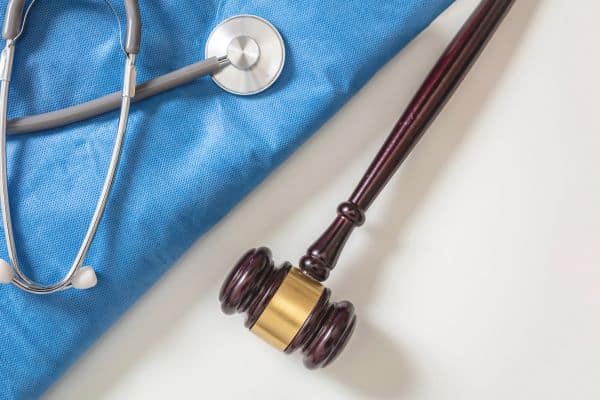Car crashes happen every day in the United States and Florida has more than its fair share. But not all car crashes are the same; there are many different kinds of car crashes that occur in different scenarios that can lead to different kinds of injuries.
A T-bone collision is one such (and common) kind of car crash.
What is a T-bone collision?
A T-bone collision, also called a broadside or side-impact collision, happens when one vehicle strikes the side of another vehicle. A T-bone collision generally occurs at intersections or at a stop sign or traffic light, but can also occur on a highway when a driver loses control of their vehicle.
A side-impact, T-bone or broadside collision is a serious type of car crash that can result in serious, and potentially permanent, injuries.
What Kinds of Injuries Can Occur in a T-bone Collision?
A T-bone collision can often result in serious injuries, especially when the impact occurs at the driver-side door, where there is little protection against the impact. In fact, the National Highway Traffic Safety Administration (“NHTSA”)* has estimated that approximately 3,000 automobiles involved in fatal crashes were initially struck on either the driver-side or passenger side (with a passenger present). The NHTSA estimated that of Florida’s 3,331 fatal crashes in 2020, approximately 20% of them were angled or sideswipe collisions.
There are many different kinds of injuries a person can sustain in a T-bone collision, but some of the more common injuries include:
• Leg fractures
• Arm fractures
• Hip fractures
• Head and neck injuries, inclusion concussions and serious brain trauma
• Cuts and lacerations from broken glass
• Abdominal and chest injuries from the steering wheel
As for leg and arm fractures, these can occur to the tibia/fibula and the ulnar and radius. These kinds of fractures are more commonly sustained by the person sitting in the side of the car struck by the other vehicle. In most vehicles, there is less than 2 feet of space between their body and outside the vehicle, so these kinds of injuries happen from the crush damage to the automobile.
As for neck and head injuries, the body can experience severe whiplash from the forward and backward movement of the collision. The whiplash from the crash can cause one or more discs in the spine to herniate, which can lead to surgery.
Additionally, due to the side impact and crush damage to the automobile, some people may suffer severe hip, abdominal and chest injuries, including fractures and other kinds of internal damage.
What are the Common Causes of T-bone Collisions?
The most common cause of a T-bone collision is the at-fault driver’s failure to yield the right of way to the other driver. But that’s not the whole story, because crashes, including fatal crashes, due to distracted drivers is often the root cause.
The NHTSA* estimated that for the year 2020, while driving too fast was the single biggest cause of all fatal crashes in the United States, some form of distraction was by far the biggest reason. For example, in 2020, use of a cell phone accounted for 5.5% of all fatal crashes, but failure to keep a proper lane, erratic driving, oversteering/correcting, and careless driving accounted for over 20% of fatal crashes. It goes without saying that a significant reason someone may fail to keep a proper lane is distraction by an electronic device.
Simply put, failure to pay attention to the road, whether from distraction or driving under the influence, is the primary cause of T-bone collisions.
Can I Sue For a T-bone Collision?
Yes, anyone injured in a T-bone collision has the right to bring a claim for the recovery of medical expenses (in the past and in the future), lost wages (in the past and expected future losses), and in the case of a permanent injury, pain and suffering damages.
Florida currently requires all licensed drivers to have $10,000 in personal injury protection (“PIP”) benefits, which is available to pay medical expenses. Additionally, the at-fault drivers bodily injury insurance coverage (“BI”), and if the injured person has uninsured/underinsured motorist coverage (“UM”), can be available to cover your damages.
In most T-bone collisions, the standard $10,000 PIP coverage will be insufficient to fully compensate the injured person for their injuries and damages, especially in the case of leg or arm fractures, and most certainly in the case of head and neck injuries. In those cases, the at-fault driver’s bodily injury coverage and UM insurance will need to be pursued to pay medical expenses, lost wages, and to compensate for the pain and suffering that comes from such a serious injury.
Let us Help
If you have suffered an injury from a T-bone collision, ask someone you trust for help. Ask the car accident attorneys at Gould Cooksey Fennell about your legal rights. We have a dedicated team of experienced trial attorneys and personal injury attorneys in Vero Beach who are ready and prepared to help you get the compensation and justice you deserve.
Request a free personal injury consultation with our team.
RELATED:
- Vero Beach Car Accident Lawyers
- Vero Beach Truck Accident Lawyers
- Vero Beach Motorcycle Accident Lawyers
Sources:








